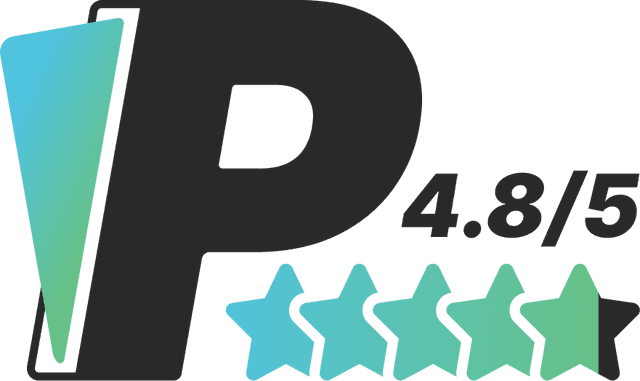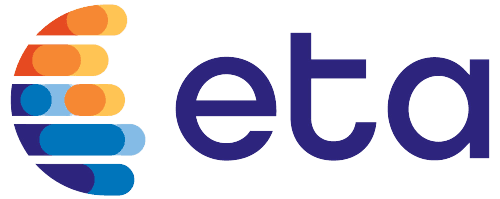As a business owner, you always look for ways to improve your bottom line. One critical factor that can make or break your profitability is how well you understand and manage your costs – particularly your fixed costs.
Fixed costs are those expenses that stay the same regardless of how much you sell or produce. Rent, insurance, salaries, and depreciation are all fixed costs you must pay each month or year, whether or not you're bringing in revenue.
Why do fixed costs matter so much? Because they represent a consistent overhead that you need to cover before you can start turning a profit. The average small business has fixed costs that account for a large percentage of total expenses. For instance, according to Bankrate, marketing alone can cost as much as 18 to 26% of total revenue—meaning that a good portion of your budget goes into making each sale.
But here's the good news: By understanding and optimizing your fixed costs, you can improve your operating profit margins. Generally, achieving an operating profit margin higher than 17.86% is recommended to outperform the market. Businesses that effectively manage their fixed costs are much more likely to be profitable than those that don't.
In this comprehensive guide, we'll break down everything you need to know about fixed costs:
• What they are and how they differ from variable costs
• Why they're so important for budgeting, pricing, and profitability
• How to calculate your total fixed costs and fixed cost per unit
• Strategies for managing and reducing your fixed expenses
• Industry-specific considerations and examples
By the end of this article, you'll clearly understand how fixed costs impact your business and what steps you can take to master them. So let's dive in and start boosting your bottom line today.
Understanding Fixed Costs
Fixed costs are business expenses that remain constant over a period of time, regardless of changes in production levels or sales volume. These costs are typically time-related, such as monthly rent or annual salaries, and must be paid even if the business isn't generating revenue.
Some key characteristics of fixed costs include:
• They are often contractual or time-based obligations
• The total amount remains the same within a relevant range of activity
• They are usually considered indirect costs, not directly tied to producing a specific product or service
Examples of Common Fixed Costs
To better understand what fixed costs look like in practice, here are some common examples:
• Rent or lease payments for office space, factories, or equipment
• Insurance premiums for liability, property, or worker's compensation coverage
• Property taxes and business licenses
• Depreciation of long-term assets like vehicles or machinery
• Salaries and benefits for certain positions, such as management or administrative roles
These expenses occur regularly and are essential for keeping the business running, even during low sales or production periods.
Fixed Costs vs. Variable Costs
In contrast to fixed costs, variable costs are expenses that fluctuate in proportion to the level of business activity. Examples include raw materials, hourly wages, sales commissions, and shipping fees.
The key difference is that variable costs increase or decrease based on the number of products produced or sold, while fixed costs remain the same regardless of volume. This distinction is important for businesses to understand when analyzing their cost structure and making decisions about pricing, production levels, and profitability.
For example, if a business has high fixed costs, it may need to achieve a certain level of sales to cover those expenses and break even. On the other hand, a business with mostly variable costs may have more flexibility to adjust production based on demand without incurring large ongoing expenses.
Importance of Fixed Costs for Businesses
Understanding and managing fixed costs is crucial for running a successful business, from budgeting and financial planning to pricing strategies and profitability analysis. Here's a closer look at why fixed costs matter so much:
Role in Budgeting and Financial Planning
One of the primary reasons fixed costs are important is their role in budgeting and financial planning. Since fixed costs must be paid regardless of sales volume or revenue, businesses must ensure they have enough cash flow to cover these expenses, even during slow periods.
Having predictable fixed costs can help businesses create more accurate budgets and financial projections. Companies can better plan their cash flow and make informed decisions about investments, expansion, or cost-cutting measures by knowing exactly how much they need to allocate for fixed expenses each month or year.
Impact on Profitability and Break-Even Analysis
Fixed costs also play a significant role in determining a business's profitability and break-even point. The concepts of contribution margin and operating leverage are key to understanding this impact:
• Contribution margin is the difference between sales revenue and variable costs, which goes toward covering fixed costs and generating profit. The higher the contribution margin, the more revenue is available to cover fixed expenses.
• Operating leverage refers to the degree to which a company relies on fixed costs in its cost structure. Businesses with high operating leverage (i.e., high fixed costs relative to variable costs) tend to have more volatile profits, as small changes in sales volume can lead to significant changes in profitability.
To determine the level of sales needed to cover all fixed and variable costs, businesses calculate their break-even point using the following formula:
Break-Even Point = Total Fixed Costs ÷ (Price - Variable Cost per Unit)
Understanding the break-even point helps businesses set sales targets, assess the viability of new products or markets, and make informed decisions about pricing and production levels.
Considerations for Pricing and Sales Strategies
Fixed costs also influence pricing and sales strategies in several ways:
• Prices must be high enough to cover fixed costs and generate a profit. If prices are too low, the business may be unable to cover its fixed expenses, even if it sells a large volume of products or services.
• Businesses with high fixed costs may benefit from volume-based pricing strategies, such as discounts for bulk purchases or subscription-based models. By encouraging customers to buy more, these strategies help spread fixed costs over a larger number of units, improving profitability.
• Companies can also leverage their fixed cost structure through economies of scale. As they grow and produce more, the fixed cost per unit decreases, allowing them to improve margins or offer more competitive prices.
By understanding the role of fixed costs in pricing and sales, businesses can develop strategies that optimize profitability and support long-term growth.
Calculating Fixed Costs
Businesses need to know how to calculate fixed costs accurately to effectively manage them. Here's a step-by-step guide:
Determining Total Fixed Costs
1. Identify all relevant fixed expenses, such as rent, salaries, insurance, and depreciation.
2. Determine the time period for which you want to calculate fixed costs (e.g., monthly, quarterly, or annually).
3. Sum up all fixed costs for the chosen time period to arrive at your total fixed costs.
Fixed Cost per Unit
To calculate the fixed cost per unit, use the following formula:
Fixed Cost per Unit = Total Fixed Costs ÷ Number of Units Produced
This metric helps businesses understand how much of their fixed costs are attributed to each unit they produce. It's essential for making pricing and production decisions and determining profitability at different sales volumes.
Potential Challenges and Limitations
When calculating fixed costs, businesses may face some challenges, such as:
• Allocating mixed costs: Some expenses, like utilities or maintenance, may have fixed and variable components. In these cases, businesses need to use appropriate methods to separate the fixed and variable portions.
• Step costs: Some fixed costs may change at certain thresholds, such as when a growing business needs to rent additional warehouse space. These "step costs" can complicate fixed cost calculations and budgeting.
Despite these challenges, businesses must strive for accurate fixed-cost calculations to support effective decision-making and financial management.
Managing and Optimizing Fixed Costs
Once businesses have a clear understanding of their fixed costs, they can take steps to manage and optimize them. Some strategies include:
Controlling Fixed Expenses
• Negotiate favorable long-term contracts with suppliers, landlords, or service providers to lock in lower fixed costs.
• Explore alternatives, such as leasing equipment instead of buying or using shared office spaces instead of traditional leases.
• Regularly review and audit fixed expenses to identify areas for cost savings or elimination.
Leveraging Economies of Scale
As businesses grow and produce more, they can spread their fixed costs over a larger number of units, reducing the fixed cost per unit. This concept, known as economies of scale, can help businesses improve profitability and compete more effectively on price.
To achieve economies of scale, businesses can:
• Invest in larger, more efficient facilities or equipment
• Expand into new markets or product lines to increase sales volume
• Streamline processes and optimize resource utilization
Make-or-Buy and Outsourcing Decisions
Businesses can also manage fixed costs by strategically choosing whether to make certain components or products in-house or to outsource them to third-party providers.
• In-house production may be more cost-effective for high-volume, core products or services, allowing the business to maintain control and benefit from economies of scale.
• Outsourcing can be advantageous for low-volume, non-core, or specialized items, as it can help avoid the fixed costs of maintaining in-house capabilities.
By carefully analyzing make-or-buy and outsourcing decisions, businesses can optimize their fixed cost structure and focus on their core competencies.
Industry-Specific Considerations
The importance and impact of fixed costs can vary across different types of businesses:
• Manufacturing and production-heavy businesses often have significant fixed costs related to facilities, equipment, and labor, making cost management and economies of scale crucial for profitability.
• Service-based businesses—like coaching businesses or travel agencies—may have lower fixed costs than variable costs, as their primary expenses are often tied to the time and expertise of their employees. However, they may still have fixed costs related to office space, technology, and administrative staff.
• Startups and small businesses may face unique challenges related to fixed costs, as they often have limited resources and may struggle to cover fixed expenses during the early stages of growth. Careful budgeting, lean operations, and creative cost-saving strategies can help these businesses manage their fixed costs effectively.
Regardless of the industry, understanding and managing fixed costs is essential for long-term success and profitability.
Mastering Fixed Costs: The Key to Profitability and Growth
In conclusion, fixed costs play a crucial role in the financial health and success of any business. By understanding what fixed costs are, how they impact profitability, and how to calculate and manage them effectively, businesses can make informed decisions that drive growth and improve their bottom line.
Key takeaways from this guide include:
• Fixed costs are constant expenses that businesses must pay regardless of sales volume or production levels.
• Fixed costs impact budgeting, profitability, break-even analysis, and pricing strategies.
• Accurately calculating total fixed costs and fixed cost per unit is essential for effective cost management.
• Businesses can optimize their fixed costs by controlling expenses, leveraging economies of scale, and making strategic make-or-buy and outsourcing decisions.
• The importance and impact of fixed costs can vary across industries, but effective cost management is crucial for all businesses.
By mastering fixed costs, businesses can improve their financial stability, make more informed decisions, and ultimately achieve long-term success. Start by analyzing your current fixed cost structure, identifying areas for optimization, and implementing strategies that align with your business goals and industry best practices.
With a strong understanding of fixed costs and a commitment to effective cost management, you'll be well-equipped to navigate the challenges and opportunities of today's competitive business landscape.
Consider Zen Payments for Payment Processing
It’s easier to build your business with the right partners and solutions on your side. Contact us today to see how we can help with your payment processing.






